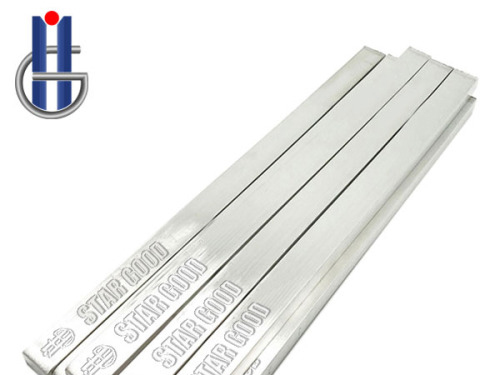Introduction:
Lead-free solder bars have emerged as a crucial innovation in the field of electronics and manufacturing, addressing environmental concerns and health considerations associated with traditional lead-based solder. This article explores the significance, composition, and advantages of
lead-free solder bars in the context of modern soldering applications.
Significance of Lead-Free Solder Bars:
Environmental Impact:
One of the primary motivations behind the adoption of lead-free solder bars is the reduction of environmental impact. Traditional lead-based solder poses environmental risks, and the shift towards lead-free alternatives aligns with global efforts to promote sustainable and eco-friendly practices in manufacturing.
Regulatory Compliance:
With increasing regulations and restrictions on the use of hazardous materials, lead-free solder bars have become essential for manufacturers to comply with international standards and ensure the safety of their products. Compliance with regulations such as RoHS (Restriction of Hazardous Substances) is a key driver for the widespread adoption of lead-free solder.
Composition of Lead-Free Solder Bars:
Tin-Based Alloys:
Lead-free solder bars often utilize tin-based alloys as the primary component. Common compositions include tin-silver-copper (Sn-Ag-Cu) and tin-copper (Sn-Cu). These alloys are carefully formulated to provide reliable solder joints while eliminating the harmful effects associated with lead.
Bismuth Additives:
Some lead-free solder formulations incorporate bismuth as an additive. Bismuth helps lower the melting point of the solder, enhancing the soldering process and mitigating potential thermal stress on electronic components.
Advantages of Lead-Free Solder Bars:
Reduced Health Risks:
Lead-free solder bars contribute to a safer working environment by eliminating the health risks associated with lead exposure. This is particularly crucial in electronics manufacturing, where workers may be exposed to soldering processes on a daily basis.
Enhanced Electrical Performance:
Lead-free solder joints exhibit comparable or improved electrical performance compared to traditional lead-based solder. These joints offer excellent conductivity and reliability, meeting the stringent requirements of modern electronic devices.
Compatibility with Modern Electronics:
As electronic devices become more sophisticated and miniaturized, lead-free solder bars offer compatibility with the delicate components and advanced materials used in modern electronics. They contribute to the longevity and reliability of electronic products.
Global Market Access:
The use of lead-free solder ensures that products can be sold and distributed globally without concerns about violating environmental regulations. This opens up markets and facilitates international trade for manufacturers using lead-free solder in their production processes.
Conclusion:
Lead-free solder bars represent a pivotal advancement in soldering technology, aligning with the global push towards sustainable and environmentally friendly manufacturing practices. The elimination of lead content not only addresses health and environmental concerns but also ensures compliance with stringent regulations. As industries continue to prioritize safety, sustainability, and performance, lead-free solder bars stand as a key component in the evolution of electronic manufacturing, offering a responsible and effective solution for joining materials in various applications.


 High Purity Tin Ingot: Crucial Applications and Benefits
High Purity Tin Ingot: Crucial Applications and Benefits
 Pure Tin Ingot: Essential Material for Diverse Industrial Applications
Pure Tin Ingot: Essential Material for Diverse Industrial Applications
 Unlocking the Potential of Pure Tin Bars: Essential Components for Diverse Industries
Unlocking the Potential of Pure Tin Bars: Essential Components for Diverse Industries
 Lead Bar for Sale: Uses, Specifications, and Buying Considerations
Lead Bar for Sale: Uses, Specifications, and Buying Considerations